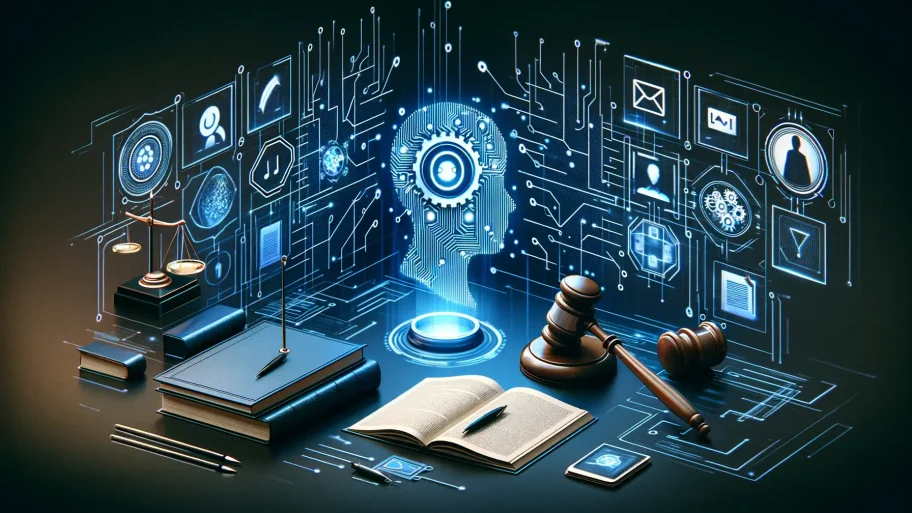Top 5 AI Use Cases in Sports Analytics and Data
- By Matt

Attention Sports Industry Professionals and Tech Enthusiasts!
Envision a future where your favorite sports teams are plagued by injuries, subpar performance, and outdated strategies. These are not just potential issues but inevitable challenges for those who neglect to integrate AI into their sports analytics and data management now.
In this article, we’ll reveal how AI can revolutionize sports analytics and data management, helping you avoid these critical problems.
Key Takeaways
- AI-driven performance analysis optimizes player performance and highlights areas for improvement.
- AI-powered injury prevention predicts and prevents injuries by analyzing player movement.
- AI in game strategy development refines team strategies using historical and real-time data.
- AI-enhanced player recruitment identifies top talent by evaluating extensive player data.
- AI-driven fan engagement offers personalized content and experiences to sports fans.
Use Case #5: AI-Enhanced Fan Engagement
Starting our countdown at number 5 is the revolutionary use of AI in fan engagement, creating personalized experiences and deeper connections with sports enthusiasts.
The Challenge of Fan Engagement
Engaging fans consistently is challenging, especially in a world where attention spans are shrinking, and competition for viewership is intense. Traditional methods of fan engagement can fall short, failing to create a lasting connection.
This struggle to keep fans engaged can lead to decreased viewership, lower attendance at games, and reduced revenue.
Impacts of Poor Fan Engagement
- Decreased viewership
- Lower game attendance
- Reduced revenue
- Weakened fan loyalty
AI in Enhancing Fan Engagement
AI leverages data to create personalized content, from tailored game highlights to immersive virtual reality experiences. Predictive analytics helps understand fan preferences, enhancing engagement strategies.
Implementing AI for fan engagement ensures a more personalized and interactive experience, boosting loyalty and increasing revenue.
Table 1: Key Benefits of AI-Enhanced Fan Engagement
| Benefit | Description |
|---|---|
| Personalized Content | Customized highlights and updates based on fan preferences |
| Immersive Experiences | Virtual reality and interactive content engage fans deeply |
| Increased Loyalty | Enhanced fan experience builds long-term loyalty |
| Higher Revenue | Engaged fans are more likely to spend on merchandise and tickets |
Table 1 highlights the significant benefits of implementing AI-enhanced fan engagement strategies.
Transforming Fan Engagement
AI-powered fan engagement changes the landscape by creating personalized and interactive experiences. This approach ensures that fans remain connected and invested in their favorite teams.
As AI technology advances, fan engagement strategies will become even more sophisticated, further strengthening the bond between fans and their teams.
Use Case #4: AI in Training Optimization
Using AI for training optimization offers personalized programs tailored to each athlete’s needs and performance goals, significantly improving training outcomes.
The Challenge of Traditional Training Methods
Conventional training programs often adopt a one-size-fits-all approach, which can be ineffective for individual athletes. This lack of personalization can hinder performance improvements and increase the risk of injuries.
This generic approach to training adds stress to athletes and coaches, making it difficult to achieve peak performance.
Challenges in Training Optimization
- Generic training plans
- Increased risk of injuries
- Limited performance improvements
- High training costs
AI-Driven Training Optimization
AI analyzes vast amounts of data, including biometrics and performance metrics, to create customized training programs. This personalized approach enhances performance and reduces injury risks.
Implementing AI for training optimization ensures that athletes receive tailored guidance, maximizing their potential and improving overall team performance.
Table 2: Key Benefits of AI-Driven Training Optimization
| Benefit | Description |
|---|---|
| Personalized Programs | Customized training based on individual athlete data |
| Reduced Injury Risk | Optimized training plans lower the chance of injuries |
| Improved Performance | Tailored training enhances athlete performance |
| Cost Efficiency | Effective training reduces the need for additional resources |
Table 2 outlines the benefits of AI-driven training optimization for athletes.
Revolutionizing Training Programs
AI-driven training optimization transforms how athletes train by providing personalized, data-driven programs. This approach maximizes performance and minimizes injury risks, ensuring athletes reach their full potential.
As AI continues to develop, training programs will become even more precise, further enhancing athlete performance and reducing costs.
Use Case #3: AI-Enhanced Video Analysis
Implementing AI in video analysis provides detailed insights into player movements and team dynamics, improving coaching and strategic planning.
The Complexity of Traditional Video Analysis
Manually analyzing game footage is time-consuming and often subjective, leading to inconsistent insights and missed opportunities for improvement. This process can be inefficient and ineffective in enhancing team performance.
This complexity in video analysis adds stress to coaching staff, making it challenging to develop effective strategies.
Challenges in Video Analysis
- Time-consuming process
- Subjective analysis
- Missed improvement opportunities
- Inefficient strategy development
AI-Enhanced Video Analysis
AI uses computer vision to analyze game footage automatically, providing objective and detailed insights into player movements and team dynamics. This enables coaches to make informed decisions and develop effective strategies.
Implementing AI in video analysis streamlines the review process, ensuring that all critical moments are analyzed accurately and efficiently.
Table 3: Key Benefits of AI-Enhanced Video Analysis
| Benefit | Description |
|---|---|
| Objective Insights | AI provides unbiased analysis of game footage |
| Time Efficiency | Automated analysis saves valuable time |
| Improved Strategies | Detailed insights inform better strategic decisions |
| Enhanced Performance | Accurate analysis leads to improved player and team performance |
Table 3 highlights the benefits of AI-enhanced video analysis for sports teams.
Transforming Video Analysis
AI-driven video analysis revolutionizes how game footage is reviewed, providing detailed and objective insights that enhance team strategies and performance. This technology ensures that all aspects of the game are analyzed accurately and efficiently.
As AI technology continues to evolve, video analysis will become even more precise, further improving coaching and strategic planning.
Use Case #2: AI-Powered Injury Prevention
Integrating AI into injury prevention strategies helps predict and prevent injuries by analyzing player movements and stress patterns, keeping athletes healthier and in peak condition.
The Risk of Injuries in Sports
Injuries are a constant threat in sports, often resulting in lost playing time and costly rehabilitation. Traditional methods of injury prevention can be reactive and insufficient, failing to address underlying issues.
This risk of injuries adds stress to athletes and teams, impacting performance and long-term career prospects.
Impacts of Injuries
- Lost playing time
- Expensive rehabilitation
- Decreased team performance
- Shortened athletic careers
AI-Driven Injury Prevention
AI uses machine learning algorithms to analyze player movements and identify patterns that indicate a high risk of injury. This proactive approach allows for personalized training adjustments, reducing injury risks.
Implementing AI for injury prevention ensures athletes remain healthier and in peak condition, enhancing overall team performance.
Table 4: Key Benefits of AI-Driven Injury Prevention
| Benefit | Description |
|---|---|
| Reduced Injury Risk | Proactive analysis minimizes injury likelihood |
| Personalized Training | Training adjustments based on individual risk factors |
| Enhanced Performance | Healthier athletes perform better |
| Cost Savings | Reduced rehabilitation costs |
Table 4 outlines the benefits of AI-driven injury prevention in sports.
Advancing Injury Prevention Strategies
AI-driven injury prevention transforms how teams manage athlete health by proactively identifying and mitigating risks. This technology ensures that athletes stay healthier and perform at their best.
As AI continues to advance, injury prevention methods will become even more effective, further reducing injury risks and enhancing athlete performance.
Use Case #1: AI for Performance Analysis
Leveraging AI for performance analysis offers real-time insights into player strengths and areas for improvement, revolutionizing how teams enhance performance.
The Challenge of Performance Analysis
Analyzing player performance manually is time-consuming and often subjective, leading to inconsistent insights and missed opportunities for improvement. This traditional approach can be inefficient and ineffective.
This challenge in performance analysis adds stress to coaching staff and players, making it difficult to achieve peak performance.
Challenges in Performance Analysis
- Time-consuming process
- Subjective analysis
- Inconsistent insights
- Missed improvement opportunities
AI-Driven Performance Analysis
AI leverages machine learning and data analytics to provide real-time insights into player performance. This includes analyzing biometrics, movement patterns, and game statistics to identify strengths and areas for improvement.
Implementing AI for performance analysis ensures more accurate and actionable insights, enhancing player development and overall team performance.
Table 5: Key Benefits of AI-Driven Performance Analysis
| Benefit | Description |
|---|---|
| Real-Time Insights | Immediate feedback on player performance |
| Objective Analysis | Unbiased evaluation of performance data |
| Targeted Improvements | Identifies specific areas for development |
| Enhanced Team Performance | Overall improvement in team capabilities |
Table 5 highlights the significant benefits of implementing AI-driven performance analysis in sports.
Revolutionizing Performance Analysis
AI-driven performance analysis transforms how player capabilities are evaluated and enhanced by providing real-time, objective insights. This technology ensures that both strengths and weaknesses are accurately identified, enabling targeted improvements.
As AI technology continues to evolve, performance analysis will become even more precise, further boosting player development and team success.
Conclusion
In the rapidly evolving sports industry, injuries, inconsistent performance, and outdated strategies are significant challenges that teams must address.
Neglecting to integrate these AI-driven technologies means missing out on opportunities for enhanced efficiency, cost savings, and superior performance. Embracing AI in sports analytics and data management is crucial for staying competitive and achieving long-term success.
Latest Posts
- By Matt | 1 year ago
- By Matt | 2 years ago
- By Matt | 2 years ago
- By Matt | 2 years ago
- By Matt | 2 years ago
- By Matt | 2 years ago
- By Matt | 2 years ago
There are no results matching your search
Trending
There are no results matching your search






